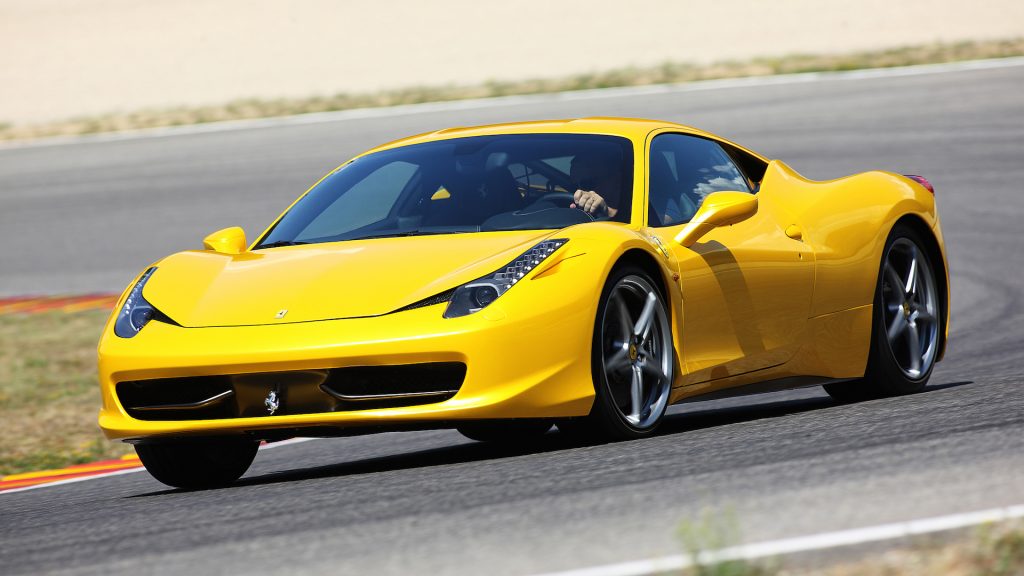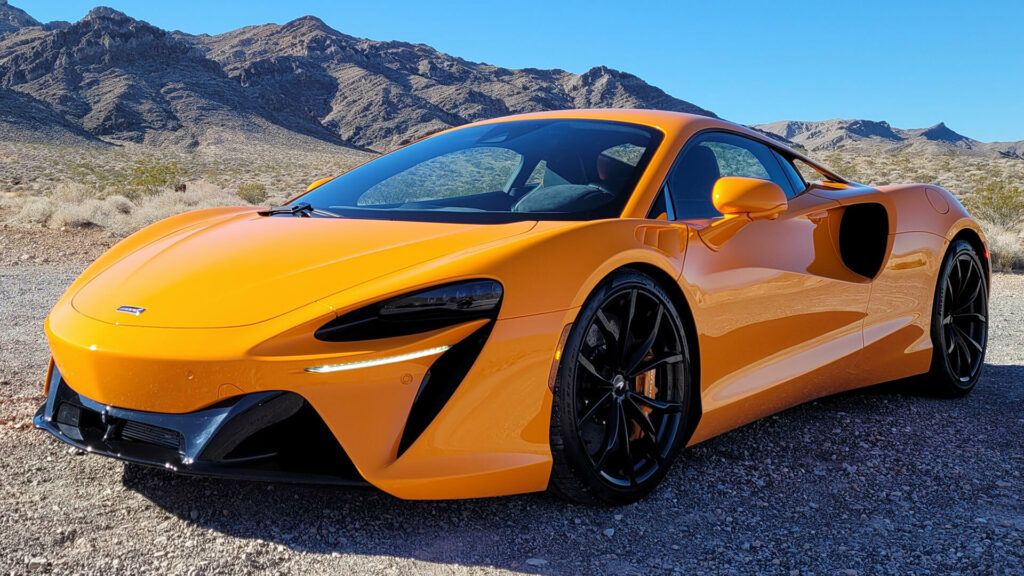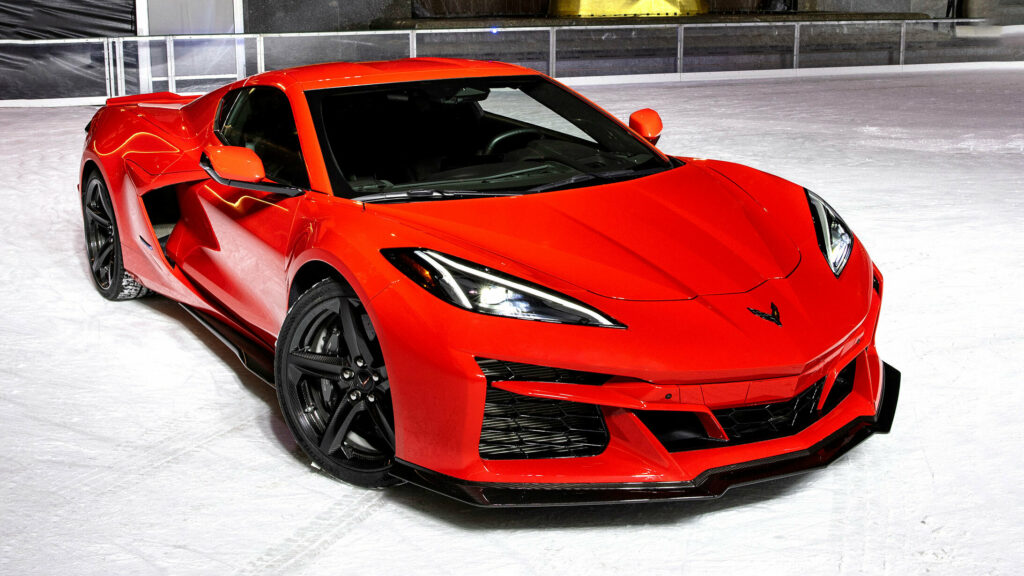What’s the most interesting thing about Chevrolet’s 2024 Corvette E-Ray? You’re not exactly short of options when it comes to answering that. You might argue that it’s Chevy’s decision to make the E-Ray a conventional hybrid rather than than a PHEV, or the fact that it costs almost exactly the same as a Z06 and actually beats the track car to 60 mph (97 km/h) by a tick. Or it could be that it weighs as much as a BMW 5-Series.
Valid points, all of them, but for me it’s that the first ever all-wheel drive C8 mates an electric motor with a naturally aspirated gasoline engine to deliver its 655 hp (664 PS). This is extremely unusual for a performance car, putting the C8 hybrid in company with Lamborghini’s limited edition $3.6 million V12 Sian, and it might just be one of the E-Ray’s coolest characteristics.
Related: 2024 Corvette E-Ray AWD Hybrid Is The Quickest ‘Vette Ever, Hits 60 In 2.5 Seconds

Let’s remind ourselves of the car that Chevy benchmarked for the C8 program. In case you’ve forgotten it was the 2010-15 Ferrari 458, the last naturally aspirated V8 Ferrari sports car, and a car that was universally loved at the time and is so sought after on the used market that late models are often worth more than the turbocharged 488s that replaced them.
Ferrari 458: light on torque, big on emotion
The 458, or more specifically its 4.5-liter naturally aspirated F136 V8 engine, was lauded for its razor sharp throttle response and orgasmic soundtrack, two qualities that didn’t make it to its successor. Don’t get me wrong, the 488 was a great car with plenty of benefits over the older machine, not least that it’s 3.9-liter F154 V8 made an additional 99 hp (100 PS) and 163 lb-ft (220 Nm) of torque.

At the 488 GTB press launch in 2015 Ferrari engineers told me that yes, going the turbo route was helpful from an emissions standpoint (and dropping below 4.0-liters made the car much cheaper in China where cars are taxed according to engine size) but the cold hard truth was that there was no way they could achieve their self-imposed performance targets for the 458’s replacement without bolting on a couple of blowers.
The 488 was undoubtedly the quicker of the two, and with so much more torque on hand at sub-stratospheric engine speeds, it required far less effort to extract that performance. Ferrari’s boost management system did a decent job of mimicking a non-turbo engine and its attempts to keep turbo lag to a minimum were also very successful, making the 488 feel far less laggy than its McLaren 650S, and later, 720S, rivals.
The turbo trade-off
But the lag didn’t disappear altogether, the rev counter’s redline encroached a further 1,000 rpm into the play zone, and worst of all, the soundtrack was pretty much ruined. Instead of delivering a rich mix of sounds and the kind of scream that was so good at erecting hairs you could use your forearm as a wire brush, the noise was now dominated by bassy tones. Think: hearing a live band or DJ up close in a club, then going for a pee and hearing the same thing from inside the restroom.
So when word came through that Ferrari (and McLaren) were planning to switch to hybrid power, I wondered if this might be an opportunity to ditch the turbos. Maybe electrical assistance could make up the power and torque shortfall experienced by switching back to a naturally aspirated configuration, and you’d get instant lag-free throttle response, an unmuffled soundtrack and, of course, the option to drive in EV mode.

But that didn’t happen. Both Ferrari and McLaren kept their turbochargers when adding volts, which has admittedly allowed both the 986 hp (1,000 PS) V8 SF90, bonkers 818 hp (829 PS) V6 296 GTB and 671 hp (680 PS) baby Artura make far more power than they would without those hamster wheels ramming air into the cylinders. I haven’t driven the Artura (Carscoops’ Michael Gauthier has; read his review here), but I have tried the 296 and I was left blown away by its pace, which is outrageous for a six-cylinder car, but convinced Ferrari had over-egged the “mini V12” soundtrack claims. It sounds good, but not that good.
Related: You Can Now Spec Out Your $104k Corvette E-Ray Online
Which is why the idea of the Corvette E-Ray is so intriguing. Personally, I’d rather it be rear-wheel drive, like the 296 and Artura, with the motor integrated into the transmission rather than acting on the front axle. But sticking it at the front was a neat way of giving the E-Ray all-wheel drive, which is one of the other key features of a car that’s designed to compete with that all-weather sports car king, the Porsche 911 Turbo, rather than encroach on the hardcore Z06’s turf. That’s the car you’d buy if you want the purest C8 driving experience, not a heavy, all-wheel drive hybrid.
Though a few people have ridden shotgun, no one outside of the factory has yet driven the E-Ray, and I can’t wait to hear what reviewers think of its unusual drivetrain combination. Looking further ahead, Lamborghini is also believed to be working on a hybrid-assisted V12 for this year’s Aventador replacement. In the meantime you’ll find me out in my Mazda CX-60 SUV (2.5-liter naturally aspirated inline four, single electric motor) making V8 noises on the school run.








